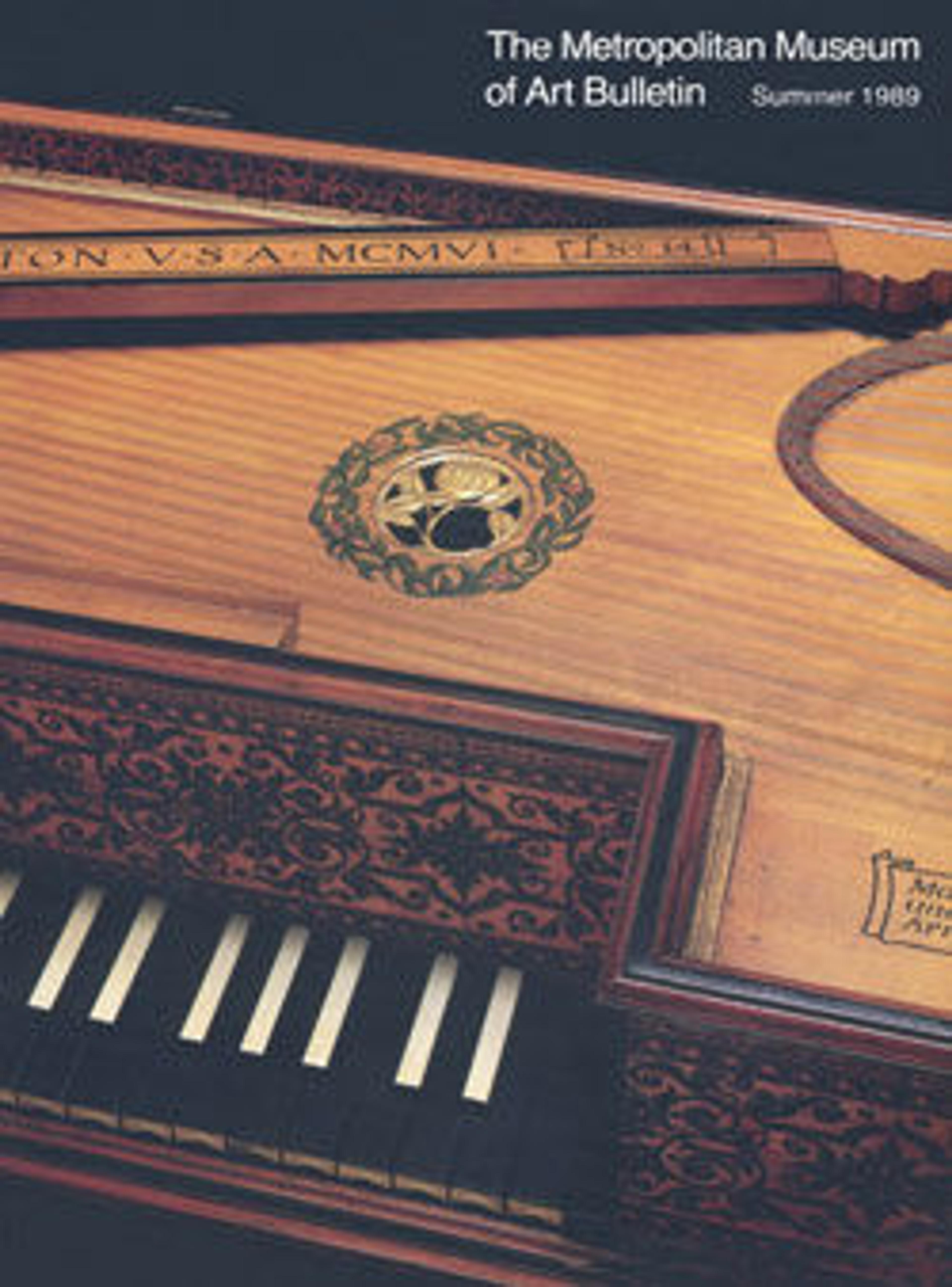Square Piano
Zumpe was a pivotal piano maker who introduced a design for a small, rectangula piano that was affordable and appealed to members of the growing middle class. Zumpe's design is known as a square piano and he introduced it in 1766. Johann Christian Bach the Queen's music master, endorsed the instrument in 1768. The growing popularity of the instrument led to Zumpe pioneering large-scape piano manufacturing in London.
This example is one of the earliest extant square pianos by Zumpe and has a mahogany case with plain trestle stand, four square legs, and three cross braces. It has a 58 note range (GG–f3) with a dummy low G-sharp key, ivory natural keys and ebony accidentals. The internal mechanism, or action, is known as the English single action. Two brass hand stops to the left of the keyboard control the dambers in the treble and the bass.
This example is one of the earliest extant square pianos by Zumpe and has a mahogany case with plain trestle stand, four square legs, and three cross braces. It has a 58 note range (GG–f3) with a dummy low G-sharp key, ivory natural keys and ebony accidentals. The internal mechanism, or action, is known as the English single action. Two brass hand stops to the left of the keyboard control the dambers in the treble and the bass.
Artwork Details
- Title: Square Piano
- Maker: Johannes Zumpe (German, Fürth, near Nuremberg 1726–1790 London)
- Date: 1767
- Geography: London, United Kingdom
- Culture: British
- Medium: Mahogany, iron, brass, ivory, ebony, various materials
- Dimensions: Case length: 127.3 cm (50 1/8 in.)
Case width: 47 cm (18 1/2 in.)
Stand measurements: H. 21 1/2 in. W. 62 in. D. 22 in. - Classification: Chordophone-Zither-struck-piano
- Credit Line: The Crosby Brown Collection of Musical Instruments, 1889
- Object Number: 89.4.2965
- Curatorial Department: Musical Instruments
More Artwork
Research Resources
The Met provides unparalleled resources for research and welcomes an international community of students and scholars. The Met's Open Access API is where creators and researchers can connect to the The Met collection. Open Access data and public domain images are available for unrestricted commercial and noncommercial use without permission or fee.
To request images under copyright and other restrictions, please use this Image Request form.
Feedback
We continue to research and examine historical and cultural context for objects in The Met collection. If you have comments or questions about this object record, please contact us using the form below. The Museum looks forward to receiving your comments.
